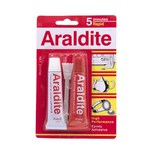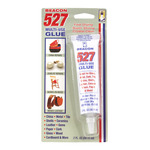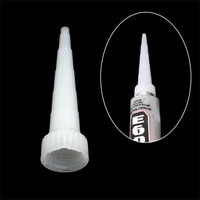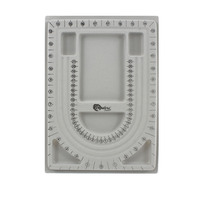Beader’s dictionary
G
GARNET
The term garnet designates a family of gems that have identical crystalline structures. These stones are transparent and colorful. There are several garnets : pyrope (red to maroon), almandine (red to Gar violet), spessartine (orange to red-brown), grossular (green, yellow, brown, devoid of color), andradite (black, brown, brown-yellow), and uvarovite (emerald green). Informally, the term garnet is often used to designate pyrope and almandine garnets but also the red wine color.
This stone is the birthstone of the month of January.
A little bit of history: Garnets have been used in jewelry making for millennia, then known as carbuncles or red gems (pyrope, almandine).
GAUGE
The metallic wires are often classified according to their diameters, called wire gauges. Gauge is the unit of measurement used to measure the diameter of wires and it is also used to measure the thickness of the metal plates. The higher the gauge, the thinner the thread. For instance, a copper wire with 16 gauge will be much bigger than one with 30 gauge. This unit of measurement ranges between 1 and 36, but the most commonly used sizes are between 10 and 30 . The number assigned to each measure is determined by the number of times a wire can be drawn (passed through a consecutively smaller holes to reduce the diameter) to attain the appropriate size.
For the creation of jewelry, the most widely used wire gauge is 20. This size of wire has a good malleability and durability even if it is shaped, while allowing beads support.
Conversion table
| Gauge | Inches | Millimeters |
|---|---|---|
| 10 | 0.1019 | 2.588 |
| 12 | 0.0808 | 2.05 |
| 14 | 0.0641 | 1.63 |
| 16 | 0.0508 | 1.29 |
| 18 | 0.0403 | 1.02 |
| 20 | 0.032 | 0.813 |
| 22 | 0.0253 | 0.643 |
| 24 | 0.0201 | 0.511 |
| 26 | 0.0159 | 0.404 |
| 28 | 0.0125 | 0.32 |
| 30 | 0.01 | 0.254 |
GEM
Gems are minerals (like diamonds) or organic (like pearls, amber and coral) material used in jewelry, and silverware. Some crystalline aggregate like the lapis-lazuli or even some stones such as marble-onyx are also called gems. For matter to be considered a gem, it must be attractive and solid enough to withstand constant manipulations. Other matters such as ivory, jet carbon, glass and fossils are at times considered gems. Synthetic stones are not considered to be gems.
GEMSTONES (See products)
They used to be known as semi-precious stone, however, this appellation was revoked because it was considered pejorative. Gemstones (also fine gem or gem) are translucent or transparent (topaz, quartz, opal, etc.). The following stones are classified as gems: amber, aquamarine, amethyst, citrine, rock crystal, cordierite, garnet, peridot, tanzanite, topaz, tourmaline and zircon.
There are also ornamental stones such as lapis lazuli and turquoise, which are often mistaken as gemstones. This term generally designates opaque colored stones or stones of a lesser value.
The reconstituted stones are manufactured by a process that reduces useless stones to a powder, the powder is then mixed with glue. Thus making a complete stone. Dyes can be added to give a certain uniformity to the stone's appearance.
The term stabilized means that a natural stone, such as turquoise, was too porous and has been dipped in a resin bath, or into another protective lacquer, to solidify.
In France, the only stones said to be precious are diamonds, sapphires, emeralds and rubies. Around the world, this term refers to any gem of great value.
GLASS
Born from the fusion of sand and mineral matters, glass is a fascinating material that plays with contrasts; familiar yet mysterious, it can be synonymous of fragility or strength, it keeps surprising and often gives us mind-blowing artistic creations.
Mankind started using natural glass as obsidians, then later on learned to make it themselves. The techniques used to make glass evolved and mankind started making transparent glass, shaped using glass-blowing methods. Then with industrialization and progress in chemistry and physics, began the mass production of glass and its usages keep diversifying.
Glass is one of the most used components in the making of beads. It can be found under various shapes; seed beads, cat-eye, fire polished, crackled glass, pressed glass, Murano glass and many more.
Cat-eye glass
Synthetic cat’s eye is made of optical fibers. The same as the ones used in telecommunications. The goal is to make with the glass the same chatoyant effect as the natural cat’s eye, a well known gemstone. The optical fibers (made of quartz fibers) are merged and coated with colorful glass.
Crackle glass
Crackled glass beads are basically simple colorful beads. They are then heated and submerged in water. The thermic shock produces fissures and cracks in the glass beads, giving it its crackled aspect. Although this method is calculated and controlled, the beads obtained are slightly weakened by the process.
Fire polished
Fire polished beads have been made in the Czech Republic since the 14th century. These beads are made of a high quality glass and hand cut. The fire polishing technique consists of exposing the cut beads to extreme heat. The heat smoothens the surfaces (facets) and the ridges and provide a shine and a luster that are closer to that of the crystal than the glass. Once cooled, the beads are polished and sparkle.
Fire polished glass beads are often considered to come in 3rd rank in terms of crystal quality however, the glass that is used does not contain lead which makes it different from crystal. Nonetheless, the glass that is used remains a higher end quality product. Most of the colors and coatings available in crystals such as Swarovski crystals are also available in fire polished glass bead, which can increase confusion.
Foil lined glass
Murano beads or silver foil are glass beads in the center of which are inserted silver-like foils. This insertion gives them a metallic aspect, a shine and a luster that recalls the fabrication process derived from the Murano island in Italy. In Murano, real silver leaves are inserted in the beads which is why they are called silver foil.
Gold Stone
Gold stone as it is commonly called is often considered as a precious stone but it is not one. In truth, it is a type of glass in which are integrated copper crystals. Under a reduced flame, copper and silica are mixed to make a bluish green colored glass. Once the mixture cools, the copper, through a thermic isolation process, creates minuscule copper crystals.
The most common gold stone is semi-transparent and brownish red in color. It derives its color from particles of copper. The other types of gold stones (blue goldstone, purple goldstone, green goldstone) are obtained by adding cobalt, manganese or chrome oxides to a highly colored matrix of the corresponding ionic color. The crystals from these variants are more likely to be silvery.
In english it has many aliases: aventurine glass, stellaria, sun sitara, monk’s gold or monkstone.
Press bead
Press beads are obtained when glass in fusion is put under pressure in a mold. At times when the bead has a design or a relief, it is stamped at the same time as the glass in fusion in the mold. The Czech republic is the main producer of pressed glass beads. India and China are also important producers but in of a lesser quality.
GLUE (See products)
There are several types of glue that can be used for different purposes. It is important to choose the right glue according to the type of work that has to be done, the type of material used and the drying time.
Araldite Fast-setting Epoxy Adhesive (See products)
Opaque 2-part glue made of epoxy resin and a polymerizing (hardening) agent. The glue is waterproof and ideal to quickly glue on materials such as plastic, wood stones, ceramic, leather and metal. Mix equal parts of both tubes and apply on both of the surfaces. Maintain both surfaces pressed against one another for about 10 to 15 minutes. Wait 3 to 8 hours for the glue to fully dry before manipulating.
Beacon 527 Glue Multi-Use (See products)
Strong thick transparent waterproof glue. It is recommended to use it in a well-ventilated room because the vapors can be harmful. It is also recommended to protect the surface or area on which you’ll be working as this glue can damage dyed, varnished or painted surfaces. This glue can be used with glass, cork, ceramic, leather, wood, paper and metal. It has a built-in sharp tip that enables precise application. Any excess must be cleaned with acetone before the glue has had time to dry, because bubbles are formed during the drying time which makes it more visible. Drying time is about 2 hours, however, it is most effective after 24 hours.
BeadFix Glue (See products)
Transparent glue extremely liquid and very effective. This glue uses capillary action, which means that it has the ability to easily flow between elements. It’s categorized as a quick grip glue. Although it takes about 24 hours for this glue to fully dry, it has a quick bonding power. This glue is choc, water, heat and cold resistant. Use it on surfaces such as glass, stone, metal, plastic and any non-porous material. Often used to glue bows, flat surfaces or to harden the end of a string (wax cotton) making it easier to thread beads through.
Be careful and apply this glue in small amounts. It’s recommended to avoid pouring the glue directly on the surface to avoid accidents. Instead, put one or two drops on a cardboard and use a needle or a tip to apply it. Watch out for your fingers because this glue bonds very quickly. It can un-polish surfaces of materials such as dyed seashells and harden soft material such as feathers and textiles.
Contact glue Good-Colle (See products)
Yellow semi-liquid contact glue. Idea for rubber, leather and metals, this glue must be applied on both surfaces that are being glued. Let each surface dry partially before joining them. Once joined, the surfaces can’t be separated. Because of it’s yellowish color it is recommended to use it in non-visible areas for a more professional finish. This glue takes about 20 minutes to dry.
E-6000 Glue (See products)
Very effective glue that can be used on a variety of surfaces. Indeed, it can be used on wood, metal, glass, rubber, leather, vinyl, ceramic and many plastic materials. This glue is often used in jewelry making because of its high resistance, transparent and waterproof qualities. It’s often used to glue two surfaces together or to glue tips. Flexible and rubbery once dry, it’s easy to remove any excess glue. Although it take 24 to 72 hours to fully dry, its viscosity enables objects to stay put while drying.
G-S Hypo Glue (See products)
Strong high precision glue. A little viscous and transparent, it is mainly used for small objects. Because of its built-in precision applicator, applying it with precision is easy. This glue is ideal to glue small objects on smooth surfaces such as glass and ceramic but also on porous surfaces such as fabrics, leather and paper. Drying time is about 10 minutes.
G-S Hypo Glue for Fabric (See products)
Strong high precision glue. A little viscous and transparent, this glue works with various textiles such as leather and wool. It can also glue plastic elements on fabrics. Because of its built-in precision applicator, it’s easy to apply this glue with precision. Drying time is about 10 minutes.
GOLD
Pure gold is a precious (noble) metal. It is of a yellow color and its shine is what makes it so popular. It is one of the most ductile and malleable metal. It has a great electric conductivity and gold is use in several industries. It is the first metal that was discovered and used by man just a little bit ahead of cooper. Gold does not oxide when it comes into contact with air or water, an esthetic property which imparts it with its value.
In the jewelry industry gold alloys are used because fine gold is too soft to resist deformation and shocks. Adding an alloy thus provides it with the necessary physical properties to be transformed. It also decreases it carats, the amount of fine gold.
Depending on the alloy used, the color of the gold will vary. The metal is mainly used provides the color of the gold.
Green gold = fine silver
Yellow gold = fine silver+ cooper
Pink gold = copper + fine silver
Red gold = copper
White (or grey) gold = nickel
Blue gold = iron
Violet gold = aluminum
| American marking fineness | Parts | % | European marking fineness |
|---|---|---|---|
| 24 k | 24/24 | 100 % | 1000 or 999 |
| 22 k | 22/24 | 91.70 % | 916 or 917 |
| 18 k | 18/24 | 75.00 % | 750 |
| 14 k | 14/24 | 58.30 % | 583 or 585 |
| 10 k | 10/24 | 41.70 % | 417 |
GOLD-FILLED
Gold-filled (or gold overlay) is the result of layers of gold that are glued using heat and pressure on a non precious metal such as brass.
The guidelines of this technique imply that the layer of gold used to plate must correspond to at least a twentieth of the total weigh of the item. The most common plating are made with 10k or 14k gold.
Much like gold, gold-filled is hypoallergenic. However, after a while, the gold layer can be damaged and dislodge itself from the item. Its deterioration can vary according to its usage, its care and the acidity of the skin it comes into contact with. Gold-filled is more resistant and thicker than standard gold plate on a non precious metal.
Do not confuse it with “gold-field”, a type of jewel (a broach) that was quite “in” during the XiXth century, during the gold rush. Gold diggers that discovered gold ore veins on their land would request a broach on which a tool symbolic to them, would be represented.
GRADUATE BEAD BOARD
Working area used to design the layout of beads and the color schemes. This tool allows you to visualize the positioning of the beads while at the same time enabling you to know the jewelry piece’s measurements. The bead board also has compartments to put beads and finishing products.
GRADUATED CUP (See products)
Transparent plastic cups are used to measure and mix elements. They are washable and reusable. They are very practical to measure and mix casting resin. Some are graduated in ml and others in ounces, drams, teaspoons or tablespoons.
GURU BEAD (See products)
Guru beads are rounds beads that have three holes when they are looked at from the outside. If we could see through the bead, the bead’s hole would be shaped like a “T”. These beads are always paired with a second conically shaped bead. They are used to join string ends. Both string extremities are threaded in the holes above the “T” and are exited together in the hole bellow the “T”. Following which, the conic bead is strung and the strings are tied together. Their size vary, however they more often than not measure about 8mm. They are generally made with semiprecious stones such as agates, cornelian and onyx but can also be made of wood and glass. The guru beads are often used to finish bracelets or mala bead necklaces (Buddhist or Hindu rosaries). This part of the rosary would represent Buddha or the master, thus the name guru.

































